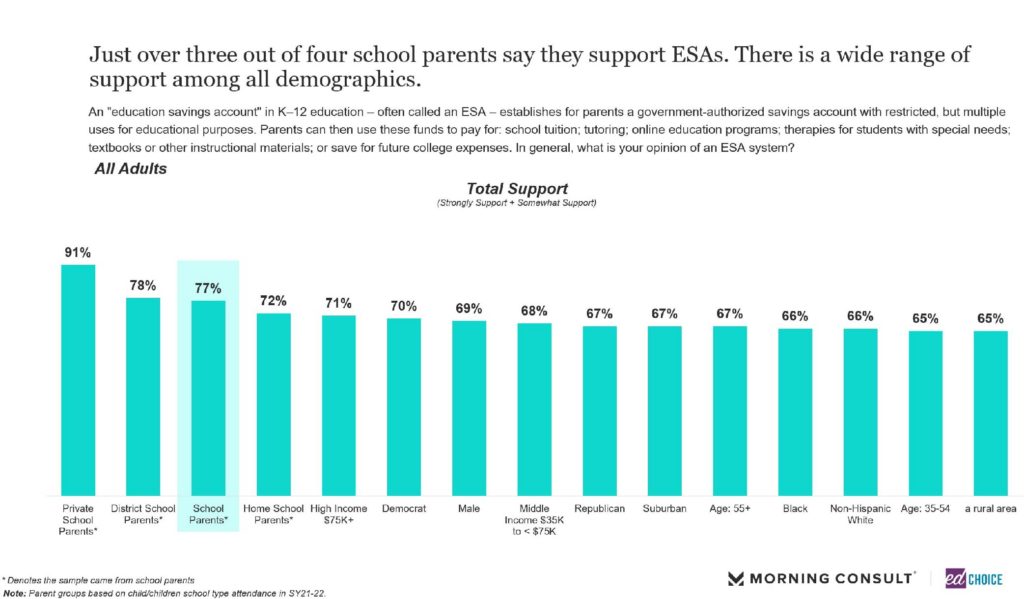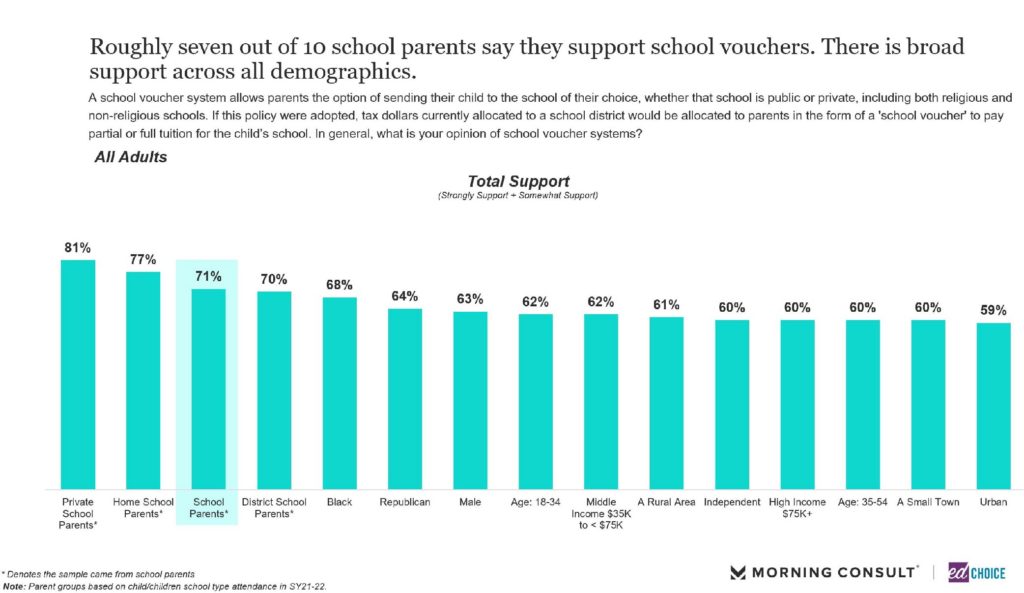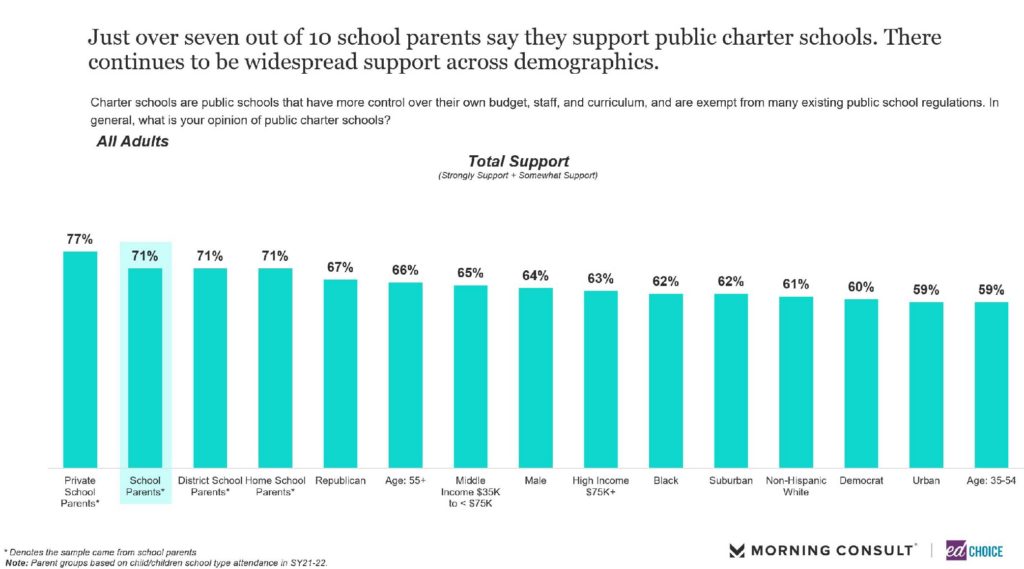EdChoice Public Opinion Tracker: Top Takeaways August 2021
Listeners of our monthly tracker podcast will recall we’ve wondered for a few months whether concern about COVID-19 during the rise of the Delta variant would ever re-emerge in our monthly opinion polling. Even with case numbers rising over the summer, public opinion on most education topics held steady.
In August, the shoe finally dropped—COVID-19 is making an imprint on our monthly survey results once again. Families and schools alike continue to face difficult decisions that will heavily affect American K-12 education this school year.
To get a pulse on how parents and Americans more broadly are feeling about the pandemic and K-12 education, we survey a nationally representative sample of American adults every month. From August 6–18, we collected responses from 2,201 adults aged 18 and over. With additional sampling, we received 1,273 responses from current school parents, which allows us to report more reliable information about parents’ opinions by demographic.
In a nutshell: People feel COVID-19 is more disruptive to their community and personal routines this month, and they are more pessimistic about various public institutions’ responses to the pandemic. Comfort with in-person education dropped substantially, and most people prefer schools to have some kind of masking and vaccination policy for teachers and students. Interest in alternative education formats and school choice policies remains high.
1. COVID-19 concerns and frustrations are returning.
From July to August, we saw the biggest one-month jump in the percent of people who feel the pandemic is “very disruptive” since January to February this year. That said, concern remains lower than it was as recently as June.
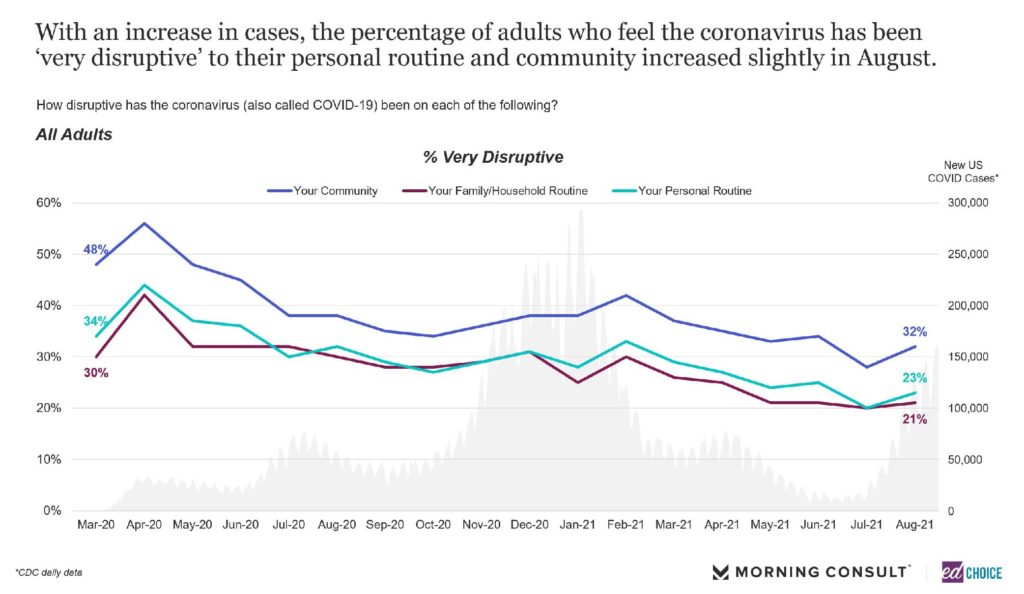
Americans are less happy with the COVID-19 response from public institutions than they were last month. The net positive ratings—the difference between the shares of positive and negative opinions—decreased for all the public institutions we asked our survey pool about. Small businesses saw their net positive rating decrease by six percentage points, five points for local government, seven points for school districts, six points for schools, five points for state government, six points for local media, four points for national media, seven points for national or multinational corporations, and five points for the federal government.
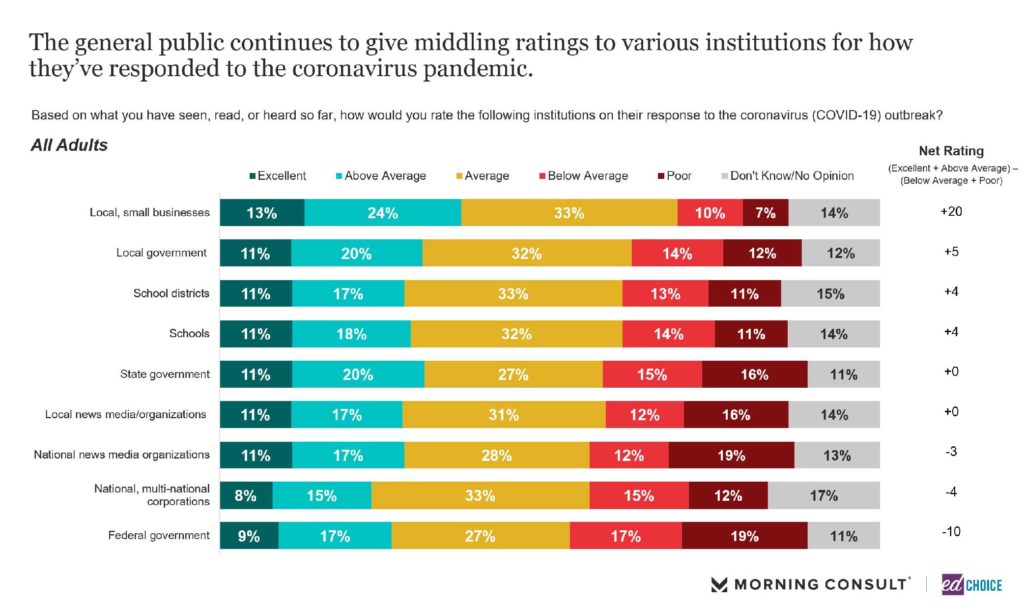
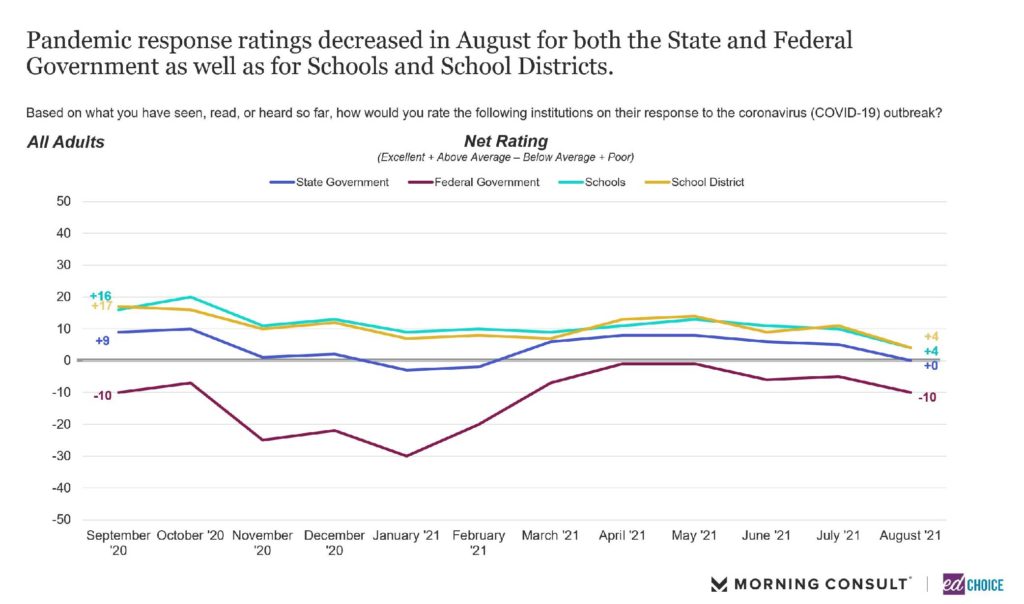
While concern about the virus appears to have risen since July, interest in receiving COVID-19 vaccines was essentially unchanged.
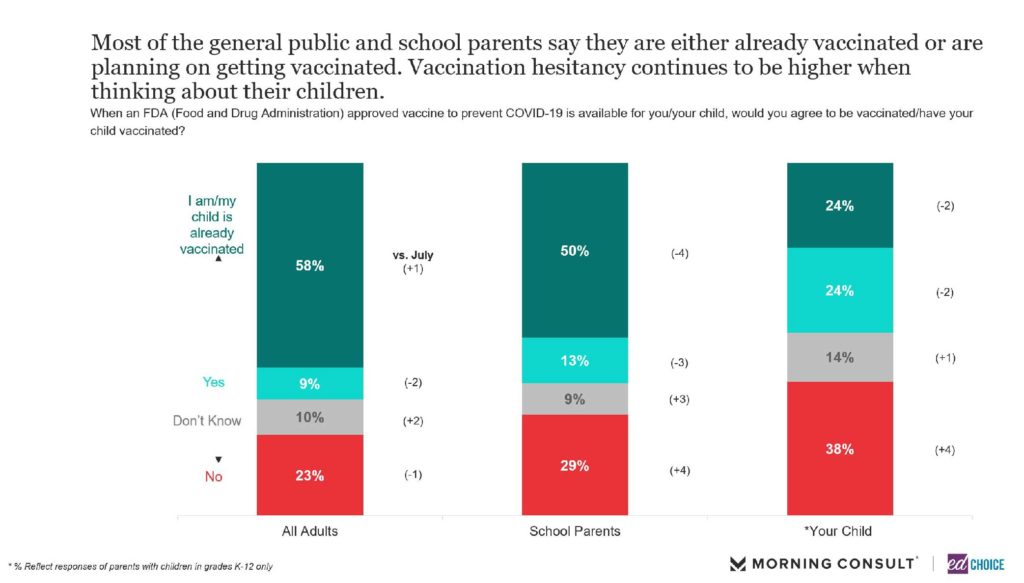
2. Parents feel more reservations about the safety of the classroom.
The share of parents who say they are comfortable with their children receiving in-person instruction right now dropped significantly from July to August, down 15 percentage points. At 57 percent, the share of parents comfortable with classroom schooling is the lowest it has been since March of this year and is roughly at the level it was at the end of the 2019–20 school year.
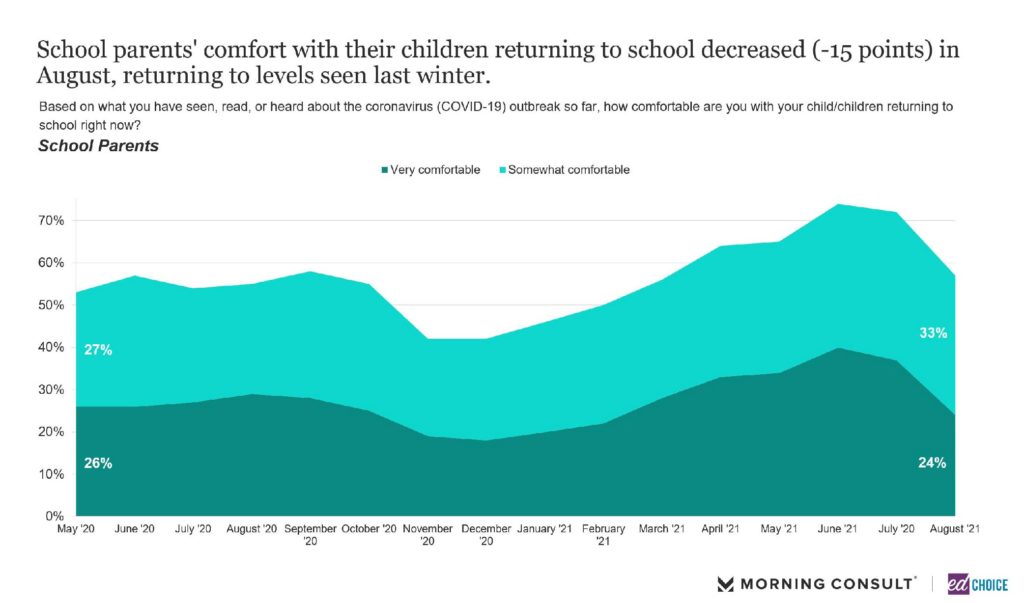
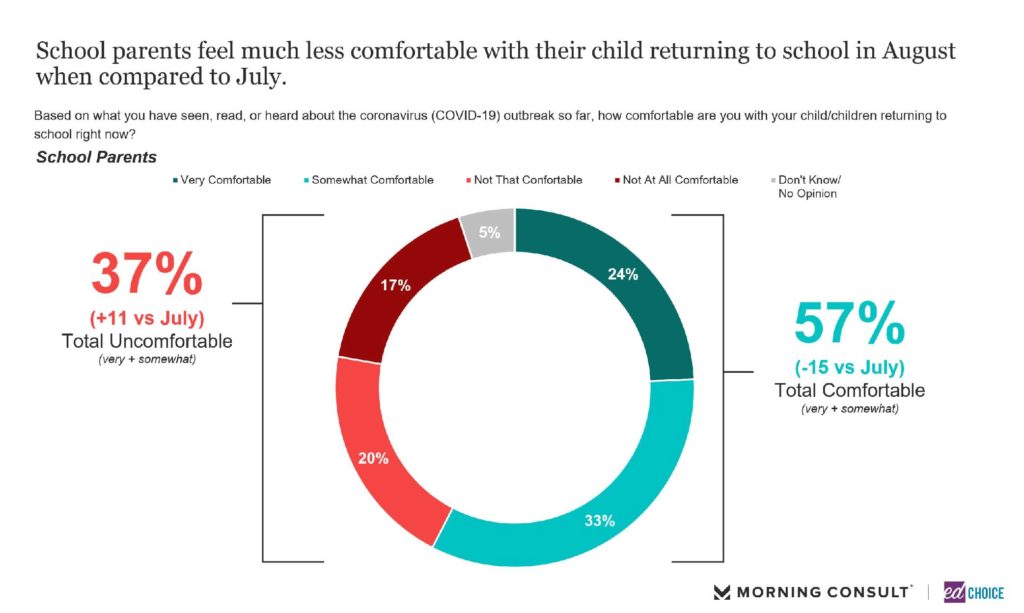
August 2021 was the first month we asked people their opinion on school masking policies. Masks are very popular tools—three-quarters of adults want teachers and students in public schools to be required or encouraged to wear masks. More specifically, half of adults want public school teachers to be required to wear them, and another 27 percent want them to be encouraged to wear them. Nearly as many (47%) want children ages 12 and older to be required to wear them at school, with another 30 percent wanting public schools to encourage those children to wear masks. For children ages 5-11, 43 percent want masks required and 31 percent want masks encouraged.
Beliefs about vaccine requirements and encouragements for public school teachers fall along very similar lines. Just under half of respondents wanted COVID-19 vaccines mandated for public school teachers, and 30 percent wanted them encouraged. Desire for public school students to be vaccinated was nearly as high as desire for masking, but people were more likely to say the vaccine should be encouraged than required for children under 18.
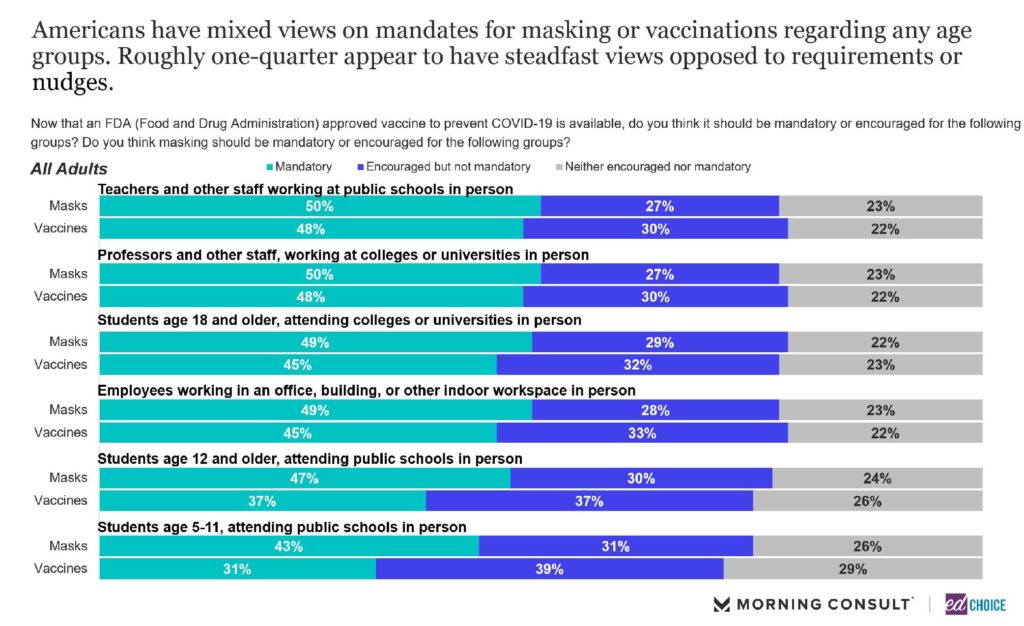
We also asked who should have the authority to decide for or against masking requirements in public schools. The general public was most likely to say the state health department, while school parents pointed most to local school boards. Elected officials were the least popular options for both parents and the general public.
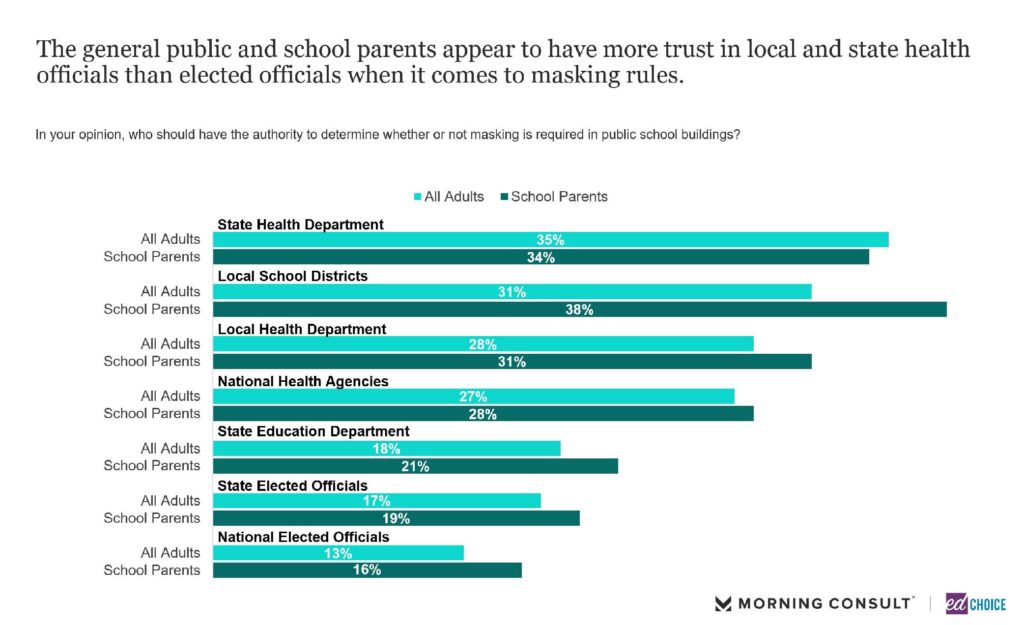
3. Some signs suggest alternative schooling options became more popular from July to August.
A family may seek alternative education formats for any number of reasons. It is worth noting, however that the month that saw the most change in feelings about COVID-19 we’ve seen in some time is also the month we see some opinions about alternative schooling shifting the most they have in several months.
We ask parents if they would prefer their school to offer one or multiple education options this year. For several months, the share of parents preferring multiple options hovered around two-thirds. In August, that number jumped six points to 73 percent.
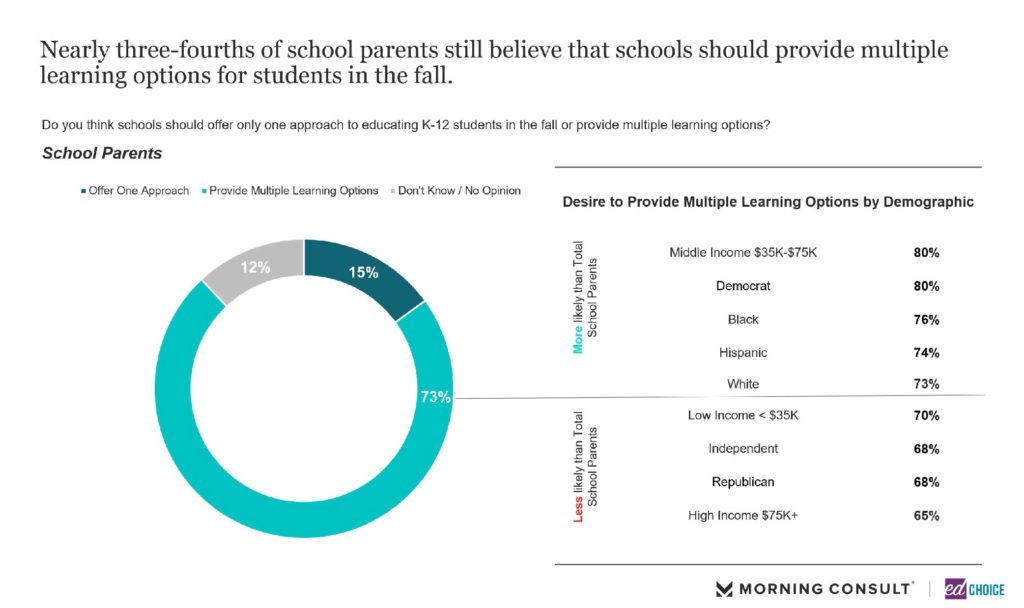
Families appear to be more interested in alternative school arrangements as well. The percentage of families who would like to see their child’s education take place entirely outside of the home has hovered around 40 percent for several months. In August, it dropped to 37 percent. We also asked parents if they would be interested in part-time schooling, blending home education with traditional classroom instruction. The percentage of families who would like to have two days at home jumped 5 percentage points among all parents and 13 points among private school parents.
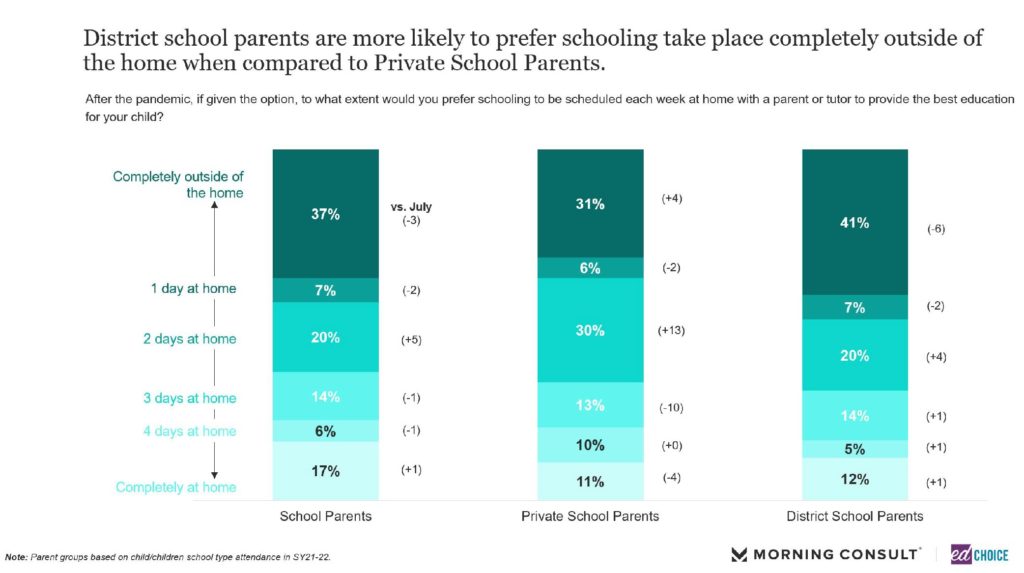
The share of parents in or interested in joining a learning pod remained unchanged from July at 34 percent. What has changed, however, is how parents say they will use pods in their children’s education. Since the end of the 2020–21 school year, about 80 percent of parents in learning pods and 75 percent of parents interested in learning pods said that they wanted them to supplement their children’s regular schooling. In August, parents were more likely to see pods as replacing regular schooling. The share of parents in pods or interested in pods saying they are or would use pods to replace their children’s regular schooling altogether increased five and seven points, respectively.
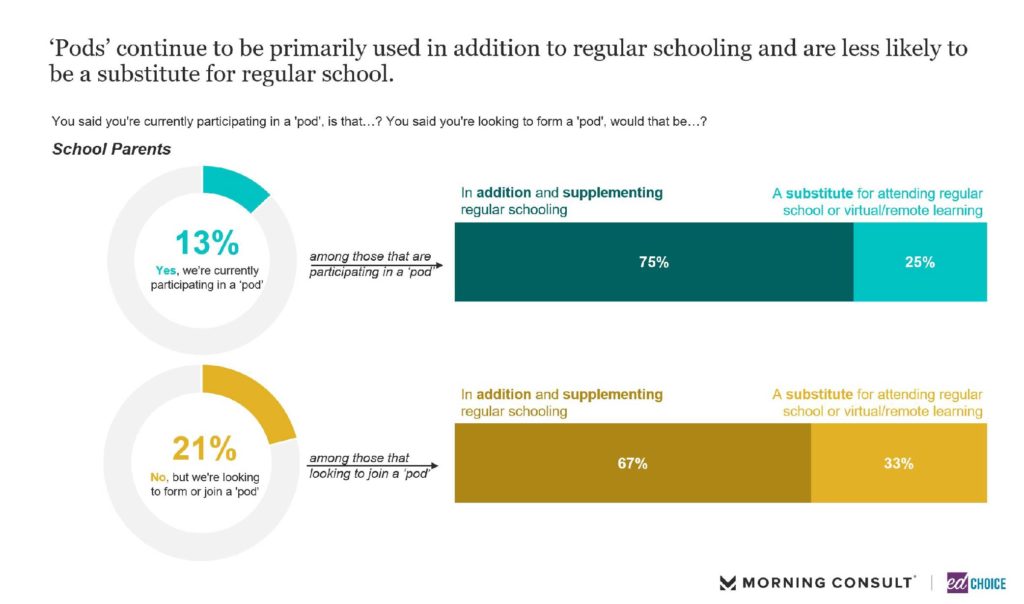
4. School choice policies remain very popular, especially among parents.
Education savings accounts (ESAs) saw a slight uptick in support from parents in August, with total support now sitting at 77 percent. Parental support for school vouchers maintained its level from July at 71 percent. Notably, August was the second straight month Black Americans were the most supportive non-parent demographic group for vouchers. Charter school support among parents also was 71 percent in August, with a slight shift away from “somewhat” support toward “strong” support.
